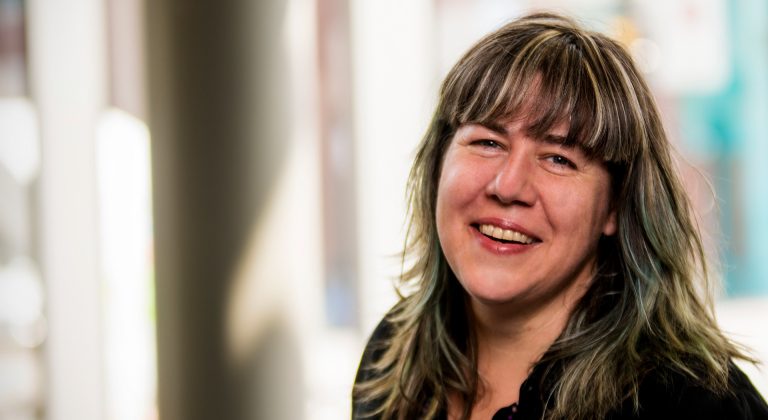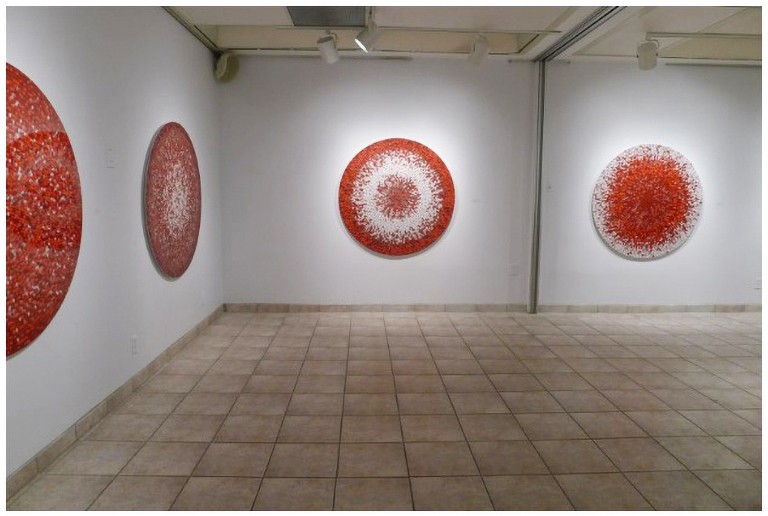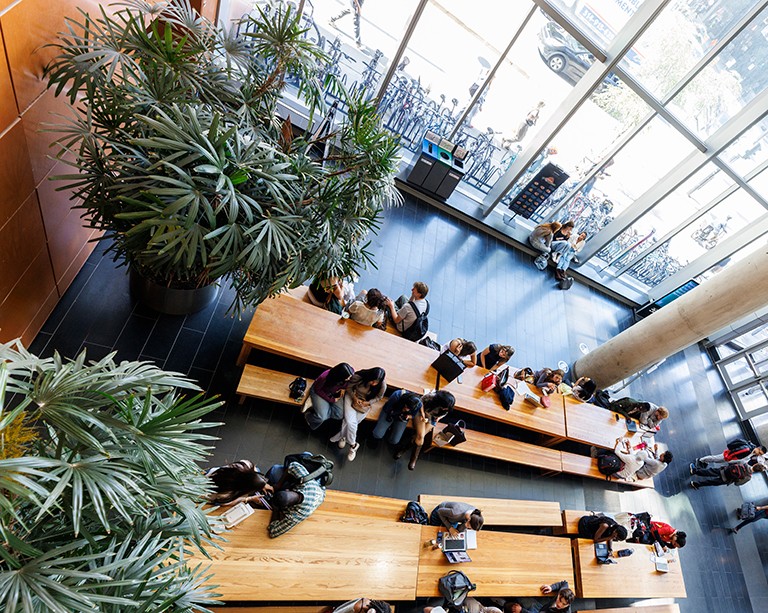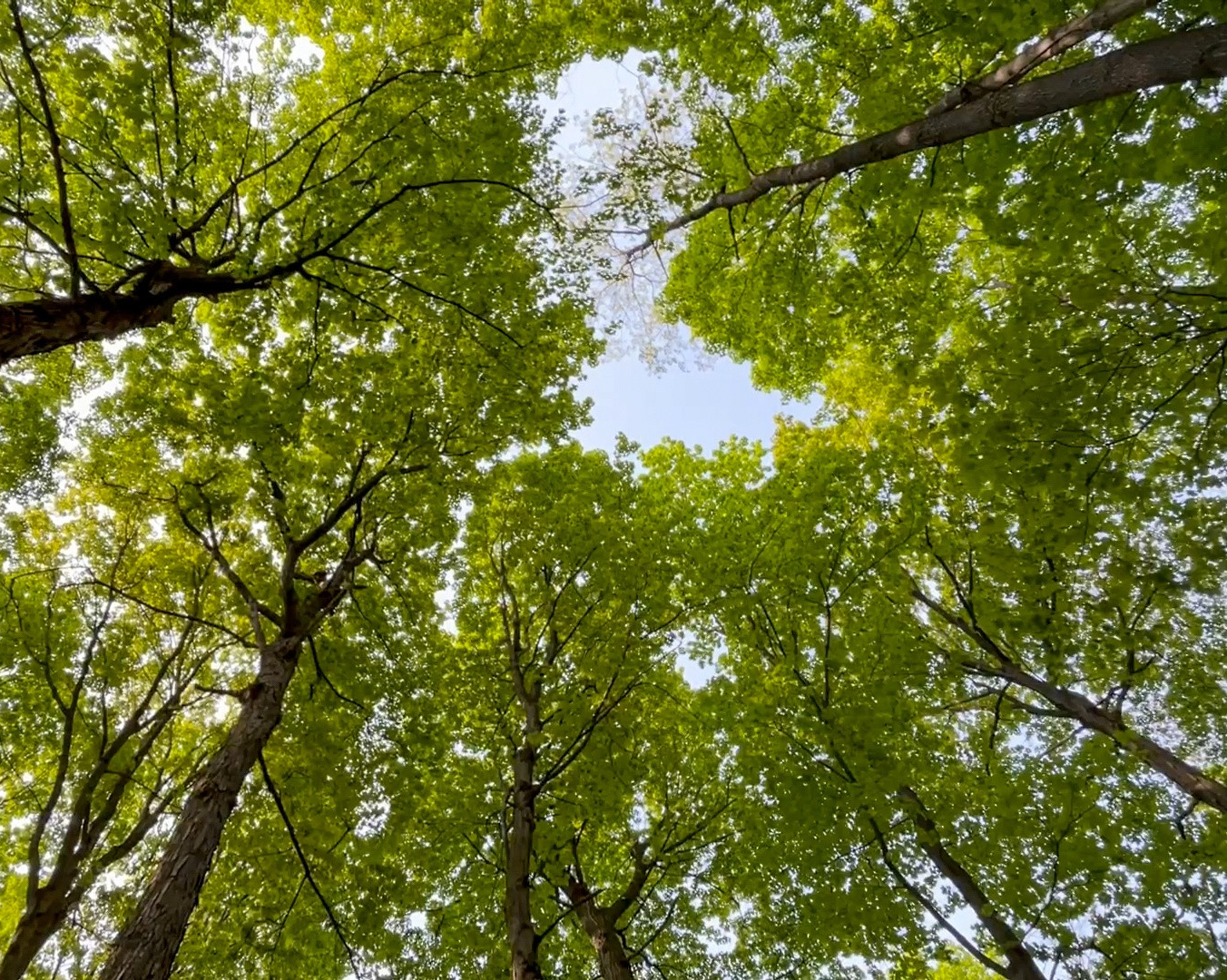Concordia prof Nadia Myre awarded Quebec’s highest honour in visual arts

Nadia Myre (Algonquin, Kitigan Zibi), MFA 02, professor in Concordia’s Department of Studio Arts and Canada Research Chair in Indigenous Art Practice, has been named the 2025 recipient of the Prix Paul-Émile-Borduas — Quebec’s highest distinction in visual arts.
Presented as part of the Prix du Québec, the award honours individuals whose work has significantly advanced the fields of visual arts, crafts or digital arts in the province. Myre’s career, which spans nearly three decades, has transformed the way Indigenous histories, materials and identities are expressed and understood in contemporary art.
Exploring belonging, resilience and memory
Myre is widely recognized for her powerful exploration of belonging, resilience and memory through both traditional and contemporary forms. Her work often bridges community participation and cultural reflection — inviting dialogue about the intertwined histories of Indigenous and settler peoples.
Her landmark piece “Indian Act” (2002), for instance, enlisted over 250 collaborators to bead over the text of the federal legislation that sought to erase Indigenous identity. The result transformed a symbol of oppression into one of reclamation and collective healing. Other works, such as “History in Two Parts” and “The Scar Project,” have become touchstones for discussions around reconciliation, identity and shared futures.
 "Meditations on Red, Installation at Maison de culture Marie-Uguay," by Nadia Myre, 2013.
"Meditations on Red, Installation at Maison de culture Marie-Uguay," by Nadia Myre, 2013.
An internationally exhibited artist and leader
Myre’s impact extends beyond the studio. As founding director of Concordia’s Kìnawind Lab — named for the Anishinaabemowin word meaning the inclusive “us” — she has built a creative and scholarly hub for Indigenous material research and hybrid art practice. She also co-founded daphne, Quebec’s first Indigenous artist-run centre, which supports artists at all stages of their careers and strengthens connections between francophone and anglophone Indigenous communities.
“I’m honoured to receive the Prix Paul-Émile-Borduas and grateful to all those who have walked beside me. My work has always been about weaving together the seen and unseen — revealing forgotten or overlooked histories as a way to bridge understanding and relationality between people,” says Nadia Myre.
For Annie Gérin, dean of the Faculty of Fine Arts, Myre challenges and expands how we think about art, history and knowledge.
“Her commitment to decolonizing creative practice and her generosity as an educator have made her an important voice both within Concordia and across the wider arts community. We are immensely proud to see her work recognized with this honour.”
Myre’s work has been exhibited across Canada and internationally, including at the National Museum of the American Indian, the Venice Biennale and Canada House in London, England. Her public art installations — from Dans l’attente | While Waiting in Montreal to Tree of Shifting Forms at the Canadian Chancery in Paris — ensure that Indigenous presence and cultural memory remain visible in public life.
By transforming materials, histories and relationships into acts of renewal, Myre continues to influence both the course of Canadian art and the conversation about what it means to belong.
Learn more about the Department of Studio Arts at Concordia.




